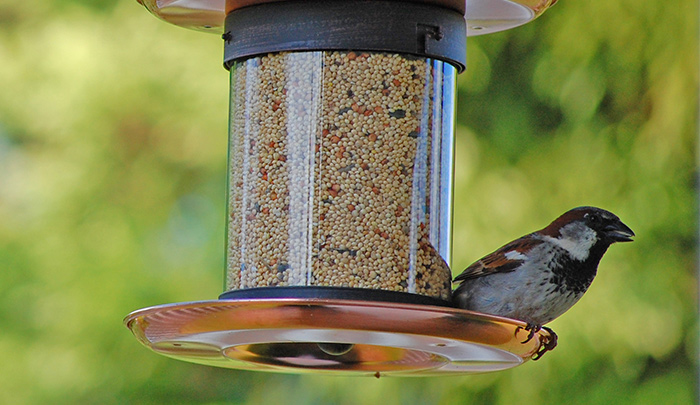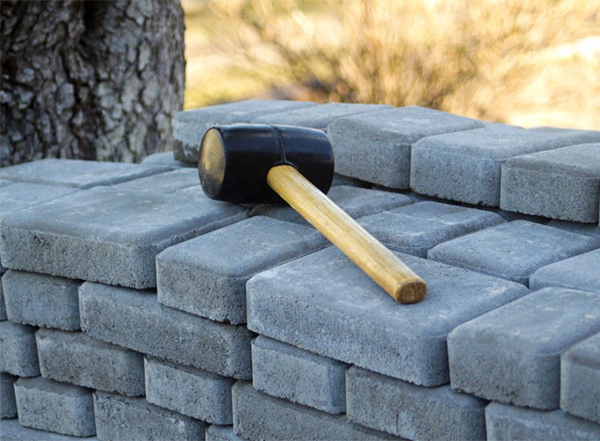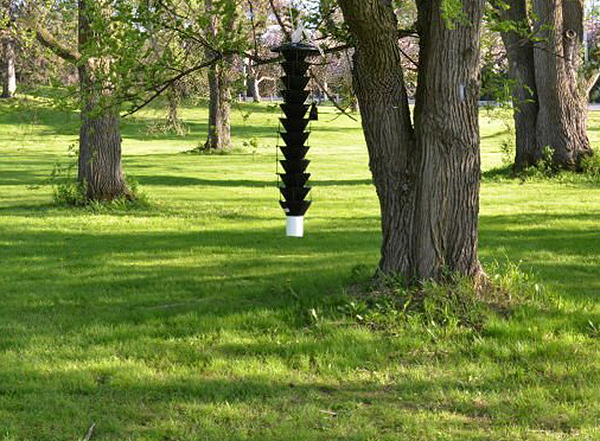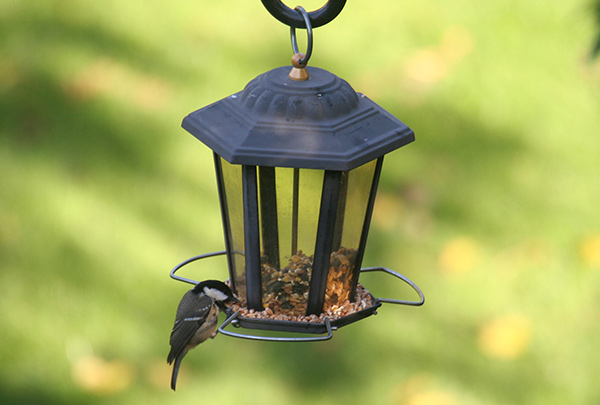Bird feeders are great investments if you want to attract little feathered friends into your yard. While it is important to choose the right feeder and the food that goes into them, it is also crucial to think of what to put under bird feeders.
Just having a bird feeder sticking out in the middle of your yard is not quite aesthetically appealing. In addition to making the bird feeder a whole lot prettier, there are also certain things you can put underneath to help with upkeep and maintenance.
This article will share a couple of information on what you can place under your bird feeder to make it more enjoyable to look at while also being easy to maintain.
Contents
What Can You Put Under Bird Feeders?
You do not just simply stick a pole into the ground, hang your bird feeder, and call it a day. There are things that you should put under it to make it look better and make cleaning underneath it a breeze. Here are some options:
Seed Catchers
Also called seed trays, seed catchers attach underneath hanging feeders or on the pole. These trays intend to catch loose birdseed and keep them from falling on the ground and sprouting. Because these trays catch uneaten birdseed, instead of wasting them, the seed catcher will allow other birds to eat the seeds instead.
Just adding a seed catcher underneath your bird feeder will instantly make it more efficient and less wasteful. In addition, if there are no seeds or grains that fall on the ground, small creatures like raccoons and chipmunks will not find out about the free meal on top of that pole.
Mulch
Sometimes, the birdseed catchers will not be able to catch all the discarded birdseed. Adding mulch underneath the bird feeder will keep the discarded seed from germinating and growing into unsightly weeds.
Make sure that the layer of mulch is thick enough so that birdseed will not reach the ground and have a chance to grow. Ideally, the mulch layer should be around 3 inches deep.
Paving Bricks
This will make cleaning up any fallen bird seed a whole lot easier. The discarded seeds will not be falling into your lawn. They will just fall on top of the paving bricks instead, so you can sweep them off easily.
In addition, paving bricks will make the base of your bird feeder a bit more attractive. You can use paving bricks to create good-looking patterns underneath the feeder. Also, the heavy bricks will keep the ground underneath your feeder compact, thereby holding the pole much easier.
Natural Ground Cover
Allowing a small bush or shrub to grow underneath the bird feeder is another good idea. The additional vegetation can provide the small birds with a foraging area. These can also prevent the fallen bird seed from sprouting because the bush will not allow a lot of sunlight to get to the sprouts, essentially starving them until they expire.
If you will be letting natural ground cover grow around the base, make sure that you trim it. Ensure that it does not grow higher than the halfway point of the pole. If the shrubbery gets a bit too high, small creatures will be able to reach the bird seeder.
How to Prevent Spilled Birdseed?
Aside from adding things underneath the bird feeder, you can do other things to prevent wasted birdseed. Here are some of them:
Only put out birdseed that the birds want to eat – Observe your feeder for a couple of weeks. Take note of the leftover birdseed and do not use them next time. This means you should no longer buy bags of assorted birdseed. Just buy varieties that the birds in your area like and then mix them yourself.
After a couple of weeks, you should be able to gauge what kinds of birdseed your avian friends like and you will no longer see any leftovers in your bird feeder.
Do not overfill the feeder – It may be tempting to put a lot of birdseed into your feeder so that you will not have to refill it constantly. However, this will also cause a lot more waste. If you do not want to waste birdseed, just place enough birdseed in the feeder that is enough for a day.
Observe your bird feeder every day. If there are plenty of leftovers by the end of the day, cut back on the amount the following day. Do this until you figure out the right amount to put out every day. However, you should think of increasing the amount once you notice that more birds are flocking to the feeder.
Use no-waste bird seed – This type of birdseed does not contain any husks, so expect birds to enjoy eating it more. This will also keep bird seed waste to a minimum. In my experience, there is always an empty bird feeder tray at the end of the day and no discarded birdseed underneath it.
Conclusion
Now that you have some ideas on what to put under bird feeders, you can try some of them right now. You can enjoy watching your little avian friends without having to dread cleaning underneath the bird feeder. You can also minimize, if not eliminate, waste altogether by following the tips mentioned above.
In addition, some of the methods mentioned above will add aesthetic appeal to the bird feeder and your yard. Give these methods a try and you will surely find the benefits more than worth the small bit of effort you need to put into them.






